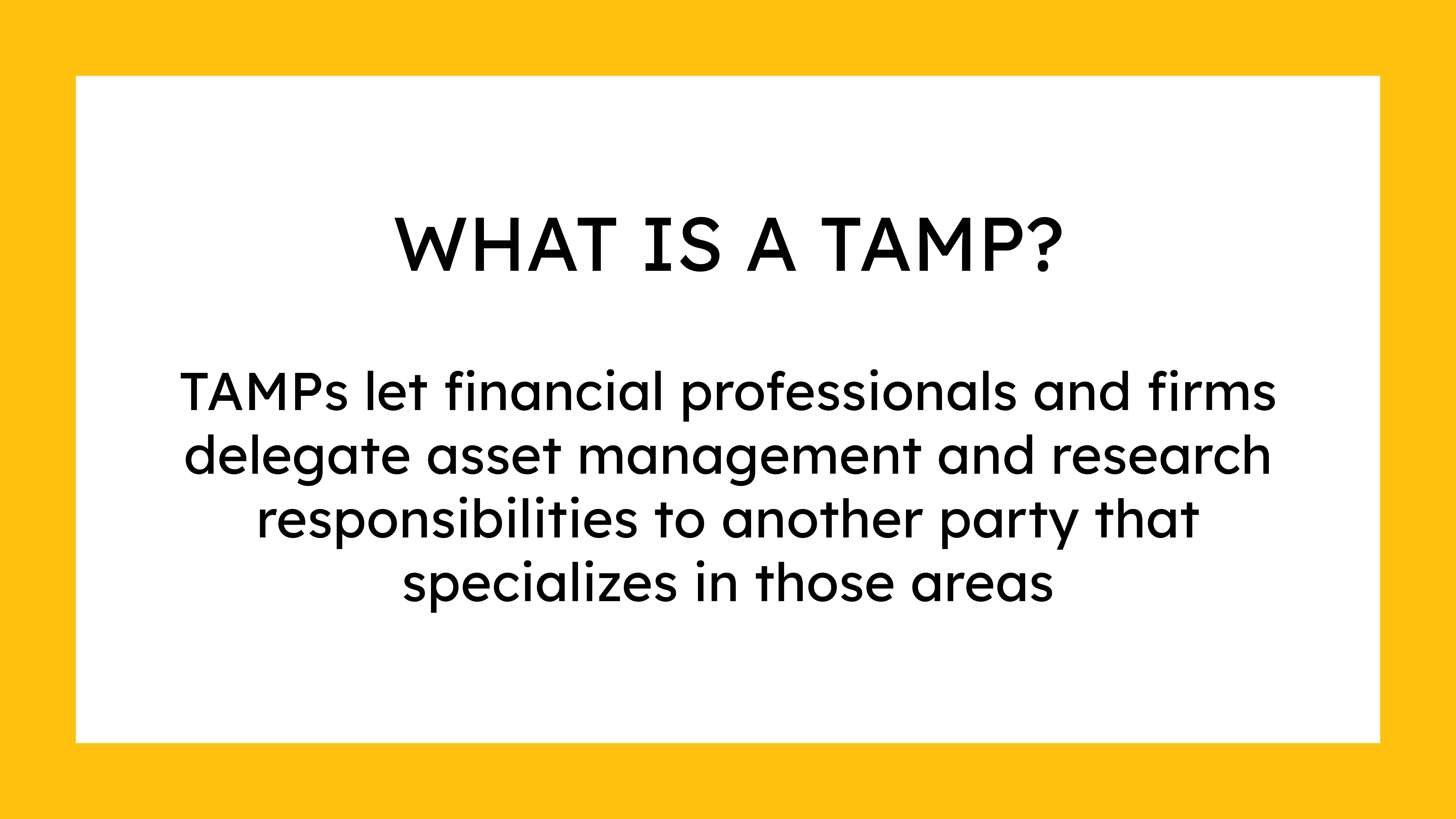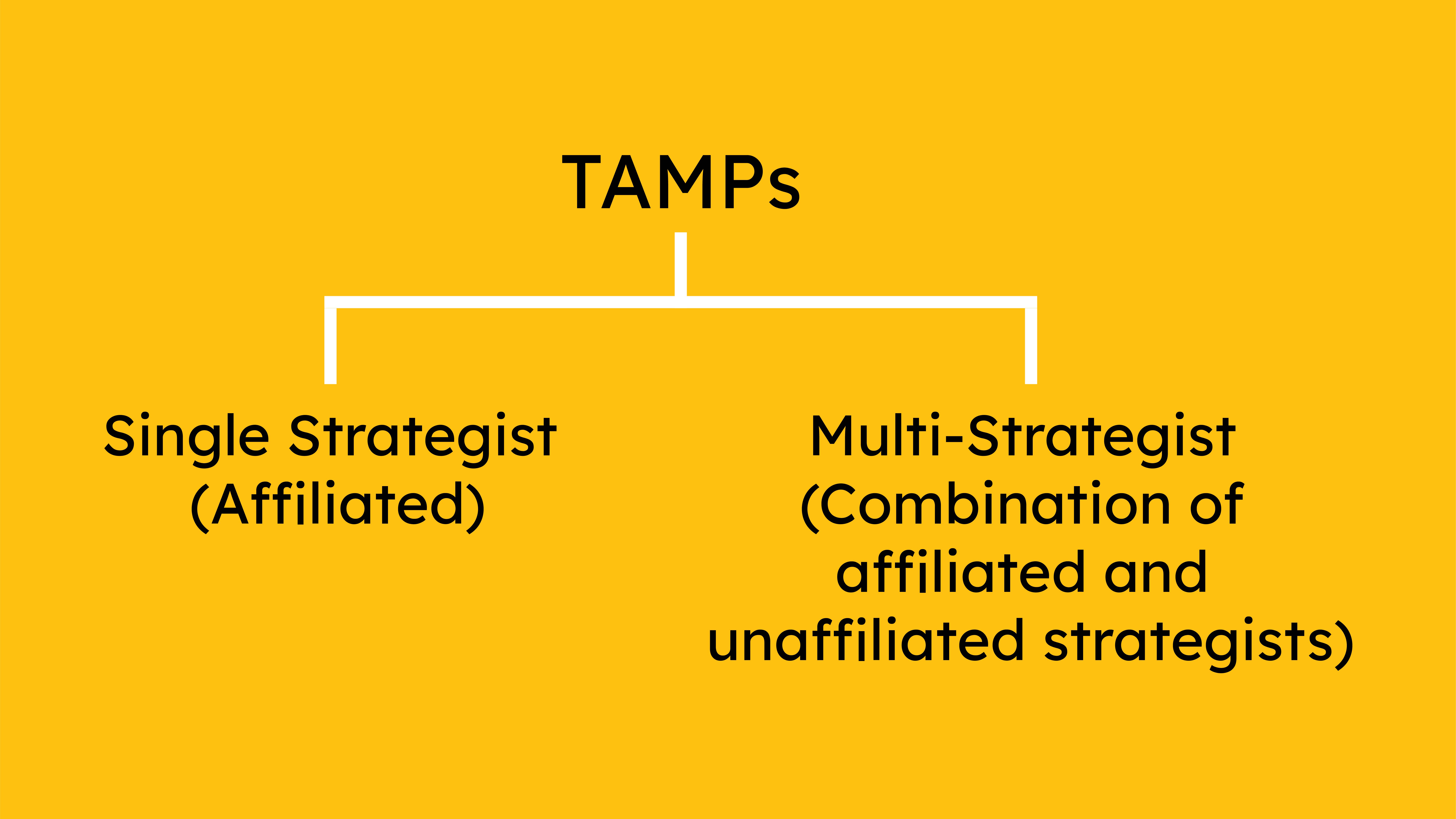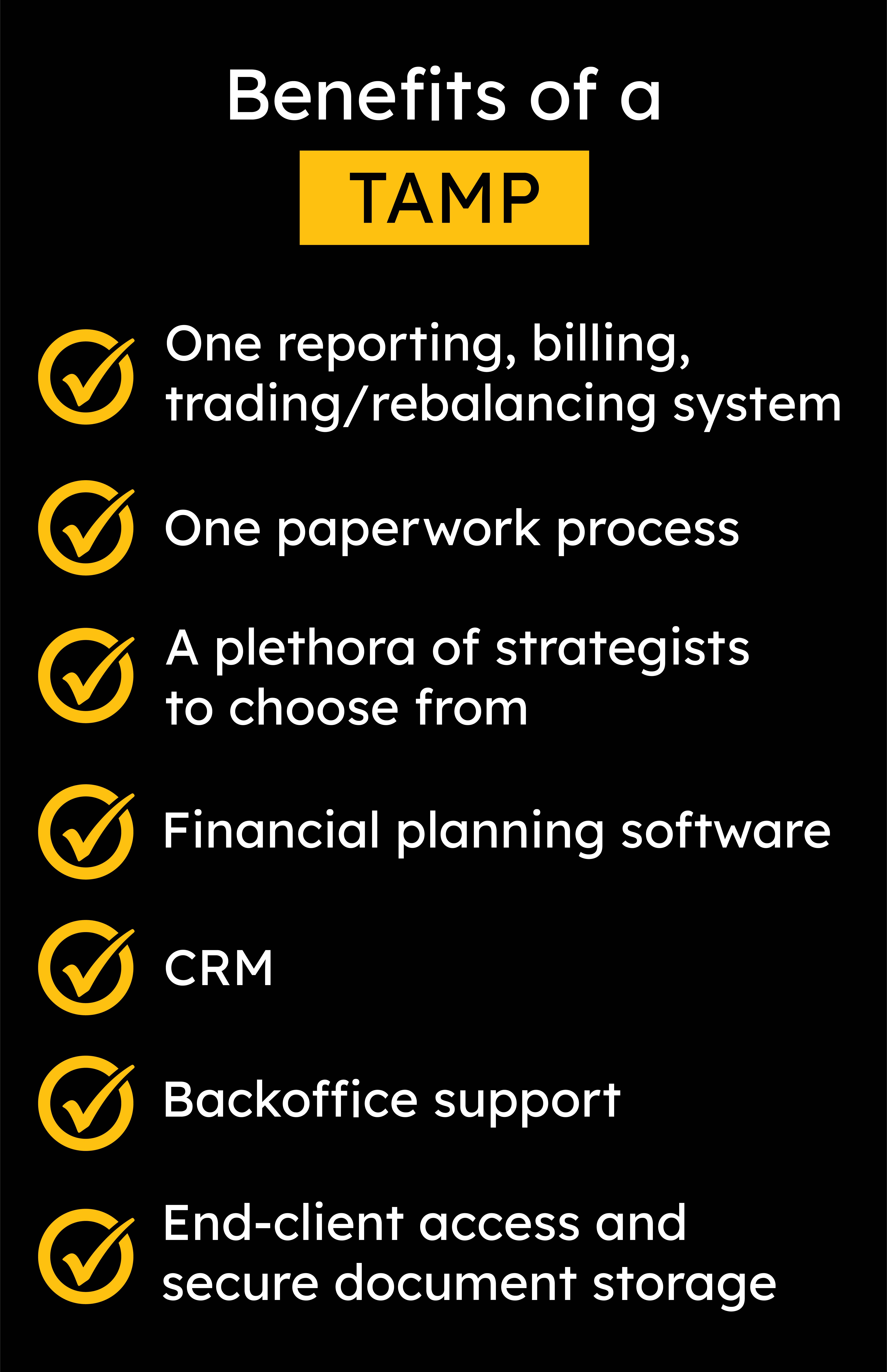
Before we TAMP
Advisors are basically the therapists of the financial world. They know a lot about clients—their job, family, financial situation, financial goals, etc.; then, they conceptualize a plan to ensure their clients can build financial wealth that fulfills their short-term and long-term goals.
Of course, like any therapist, advisors are there on speed-dial, working through their client’s emotions on life and the moving markets.
And that’s where advisors feel the real tedious work comes into play—investment research, asset allocation, trading, and more can be incredibly burdensome on top of finding them the right strategist.
While technology may often solve this, if an advisor searched “Technology tools used for financial advisors,” there would be a myriad of pages with different answers. It might take the human lifespan to go through more than four hundred million results. (DM us if you think it’s over/under.)
We’re sure many of the programs could be successful if implemented for their clients, but picking many one-off solutions and creating your own tech stack usually never works.
Bundling together all the “simple solutions” out there becomes a complicated web of tools that is anything but simple. Now, if one platform did all of that, an advisor might see business becoming more efficient and thus easier to grow.
Enter the world of the TAMP solutions. The word “TAMP” has been thrown around this industry a lot, and as an advisor, you may be saying to yourself, “I don’t even know what a f/**ing TAMP is.” Don’t worry; you’re not alone.
TAMP, also known as a Turnkey Asset Management Program, is a technology platform designed to provide financial advisors with services like providing a smorgasbord of financial strategists, investment research, portfolio allocations, and a reporting system, to name a few.
As Investopedia puts it, “TAMPs let financial professionals and firms delegate asset management and research responsibilities to another party that specializes in those areas.”

Goodbye, daily draining tasks.
Advisors have probably seen some version of the platform before because it’s been around a long time—it’s just recently moved to an efficient cloud-based technology and has a catchier acronym.
The core of a TAMP
A TAMP, at its core, is a bucket of outsourced services for financial advisors. As stated above, it provides advisors technologies like back-office functionality and third-party asset management for a client’s portfolio, but we’ll get into its specifics a little later.
It is essential to note there are differences among TAMPs. The investment management element of a TAMP can be a single strategist (affiliated) or a multi-strategist (combination of affiliated and unaffiliated strategists) because not every TAMP is alike.

However, no matter the TAMP, its purpose remains the same: to offer all the services that an advisor might need to run their business.
Now, if you’re an advisor who likes to handle everything themselves, this solution might not be for you.
As we originally stated, advisors are like financial therapists. So, if you’re looking to spend more time strengthening relationships with clients, this is where a TAMP becomes useful.
We want to acknowledge that we are a multi-strategist TAMP (hopefully, you know since you’re on this website); however, despite the link, this article isn’t designed as a self-serving advertisement.
We know many of you have questions—and when it comes to what a TAMP offers, why not allow the people who work in this space daily to explain it.
In the end, you can decide for yourself what TAMP is right for you.
Consolidate the client experience, simplify the advisor experience
TAMPs are meant to simplify the user experience not just for the client but for the advisor.
Advisors can select which strategist and specific model and/or models they want to use for their client, but that’s where the responsibility ends—it’s the TAMP’s role to get the trade information from an individual model strategist and implement them in the accounts.
All the advisor is doing is making sure that the strategist combination still makes sense for each client’s situation.
By consolidating everything surrounding a client’s investment portfolio, the advisor has alleviated the research and stress of what to put in a portfolio on a day-to-day basis; and the client has one login that allows them to see all their “financial stuff” in one place.
Here’s a list of some common time-saving tools commonly found in TAMPs that improve an advisor’s business and make life easier for their clients.

One reporting, billing, trading/rebalancing system
Let’s be honest: reporting, billing, and trading are a pain. Not only do you have to hire staff, but they need to be savvy enough to work with the software. As Manish says, “There is not one software system out there that’s a Staples easy button.”
A TAMP takes that off an advisor’s plate entirely. The advisor might be picking the client’s specific strategist or models, but it’s hands-off after that; the TAMPs are doing the billing, trading, and reporting for clients.
One paperwork process
There are a lot of grievances for advisors when it comes to processing paperwork. With multi-strategist solutions, advisors will never have to track down multiple sets of packets and forms to place with strategist. Instead, they’ll use one set of paperwork and invest accordingly.
A plethora of strategists to choose from
Finding the right option can be a tremendous task because every client’s need is different. Is a client looking for a moderate conservative strategy that focuses on the broad market sectors, or are they looking for a tactical timing satellite strategy that can be used in conjunction with a core strategy?
If there are too many strategists, some TAMPs offer OCIO services to remove that burden too. Costs may vary on these services, so be sure to clarify.
Advisors can find the perfect fit for their clients without the struggle of submitting a full set of unique paperwork for each strategist individually like many did a decade ago.
Financial planning software
Does a client have a financial goal to buy a house or maybe send their kid to college? TAMPs often have financial tools that allow them to map out their short-term or long-term goals within a specific timeframe while keeping track to make sure clients are hitting those goals.
Financial planning software embedded in the TAMP structure allows for more accurate data flow between the software and the accounts.
CRM
Every advisor knows that customer relations can make or break any business; therefore, a TAMP may already have a customer relationship management software built in.
This tool allows the advisor to keep a neat, clean file of the client and log previous interactions with them, so as the Beatles once said, “you say, Goodbye (to client folders) and advisor’s say, Hello, Hello, Hello (to enhancing the advisor-client relationship).
Backoffice support
This is for all the overworked assistants.
Every assistant will say thank you for choosing to work in a TAMP environment because they can get more work done for the advisor by not waiting on hold for hours with custodians.
End-client access and secure document storage
Having to deal with a multitude of client paperwork can be convoluted—searching for documents like tax documents, beneficiary info, client statements, etc., for every single client is like circling a labyrinth.
The advisor can remove themselves from that process entirely because TAMPs focus on account overview and financial plans while having secure document storage.
Through all these technological advances, a TAMP is designed to be an extension of an advisor’s office. A TAMP operates in the background so advisors can continue to be the face of their company and can focus on caring for clients and growing their business.
Get time back through a TAMP
Of course, with anything in life there is a fee.
The cost of a TAMP varies across the board, but ROI remains the same: time.
When an advisor is taking the time to handle everything that comes with their client’s portfolio, they begin to lose sight of the most important aspect to their business—the client.
And that’s the main point, right? Advisors are in the business of helping people, so focusing on the client relationship may mean having to outsource all the mundane intraday tasks, but in the end, it leads to saving time and creating more efficiency within an advisor’s firm.
And maybe, just maybe… when the advisor has ensured all their clients are taken care of, they can finally focus on themselves. This isn’t the first time we’ve discussed a TAMP, and it certainly won’t be the last.
Building a business doesn’t happen with the snap of a finger—an advisor must take the right approach for themselves.
Disclosure: This information is prepared for general information only and should not be considered as individual investment advice nor as a solicitation to buy or offer to sell any securities. This material does not constitute any representation as to the suitability or appropriateness of any investment advisory program or security. Please visit our FULL DISCLOSURE page.
